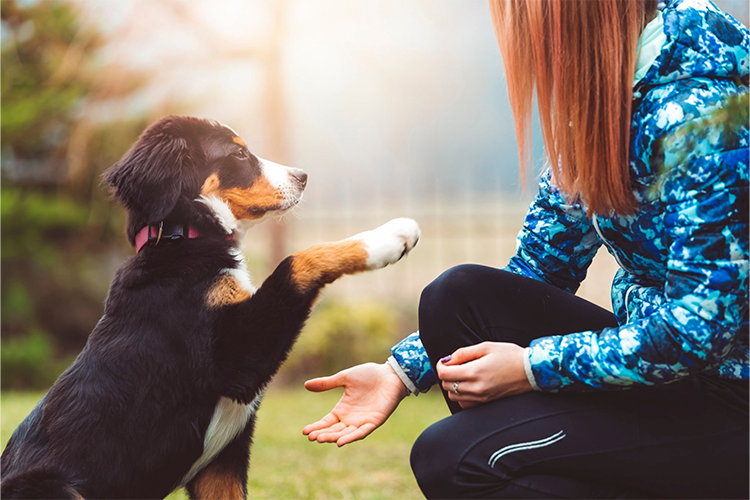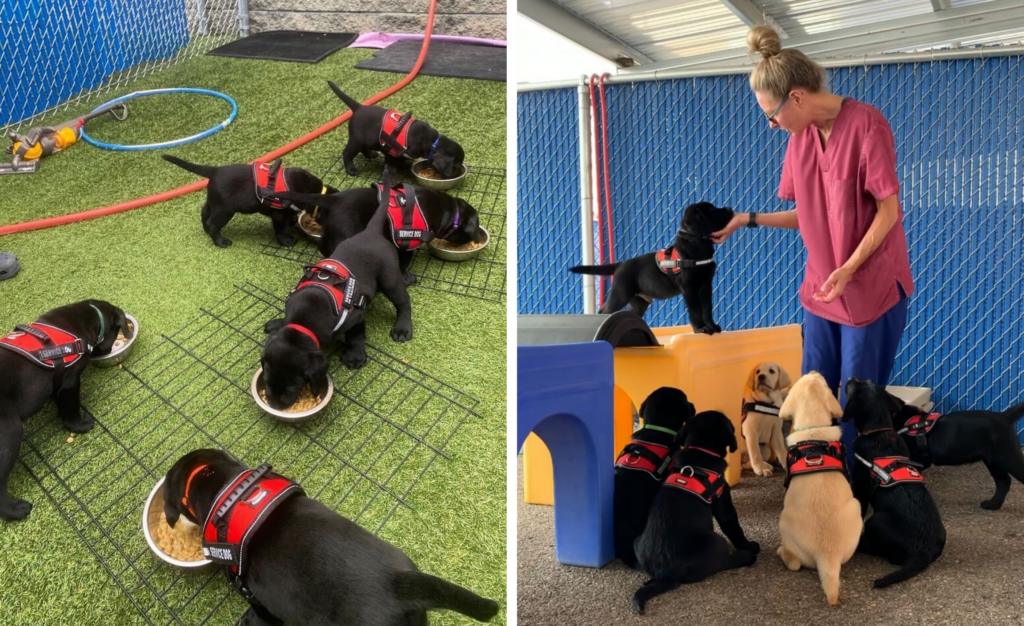Beginner's Overview to Effective Canine Training at Home
Successfully educating a pet dog at home calls for a nuanced understanding of canine habits and effective communication methods. Establishing clear training objectives, using premium rewards, and keeping consistency throughout member of the family are vital elements. In addition, incorporating training into day-to-day routines can enhance both involvement and retention. Nonetheless, lots of amateur fitness instructors encounter obstacles that might hinder progression. To browse these complexities effectively, it's essential to check out numerous key facets that can change your method and bring about a harmonious connection with your pet dog. What fundamental principles should every novice grip to guarantee success?
Understanding Pet Behavior
Recognizing pet dog actions is essential for efficient training and fostering an unified partnership in between human beings and their canine companions. Dogs interact mainly through body language, articulations, and faces, making it important for proprietors to translate these signals properly. Recognizing habits such as tail wagging, growling, or shrinking can provide insights into a dog's emotion and intents.

Typical behavior issues, such as hostility, anxiousness, or excessive barking, commonly stem from misunderstandings or unmet requirements. Observing and addressing these problems immediately can prevent acceleration and make sure a favorable training experience. By fostering a deep understanding of canine habits, proprietors can customize their training methods to suit their canine companions, eventually bring about a well-behaved and happy animal.
Necessary Training Tools
A well-equipped training area can considerably enhance the effectiveness of pet training in the house. Important training tools make certain that both the pet dog and the fitness instructor can participate in effective sessions that cultivate learning and bonding.

Buying a sturdy chain and a comfortable, well-fitting collar or harness is vital for safety and security and control. These devices help develop limits and make sure the dog continues to be protected throughout training. In addition, a marked training area, free from disturbances, aids concentration for both the pet dog and the trainer.
Training aids such as training pads, cones, or dexterity equipment can likewise improve the experience by introducing range and challenges. Having a note pad or electronic app for tracking progression can be important, enabling you to keep in mind successes and areas for renovation. Making use of these necessary devices will certainly produce a positive training setting and lay the foundation for reliable knowing.
Producing an Educating Routine
Establishing a constant training regimen is necessary for effective pet dog training in the house. A well-structured routine not only assists in enhancing wanted behaviors but also supplies your pet with a complacency and predictability. To create a reliable training regular, start by recognizing details training objectives, company website such as basic commands, leash strolling, or housebreaking.
Pick an assigned time every day for training sessions, ideally when your canine is receptive and alert. Sessions should be short, approximately 5 to 15 mins, to maintain emphasis and protect against tiredness. Consistency in timing and atmosphere will enhance your pet's learning experience.
Incorporate training right into day-to-day activities to strengthen abilities. For example, practice commands throughout strolls or nourishment, which integrates learning right into all-natural regimens. In addition, continue to be adaptable and change the routine as needed, suiting your pet dog's energy degrees and mood.
Favorable Support Strategies
Positive support methods are essential to effective pet training, promoting desired actions with rewards instead of punishment. This method makes use of positive stimuli, such as deals with, praise, or play, to encourage dogs to repeat specific activities. The cornerstone of this strategy is timing; incentives must be provided instantly adhering to the preferred actions to produce a clear organization.
When applying favorable reinforcement, it is crucial to pick benefits that are encouraging for your canine. High-value deals with, such as small items of chicken or cheese, can be especially effective throughout training sessions. Furthermore, differing the incentives can preserve your canine's interest and enthusiasm.
Start with simple commands, like "sit" or "stay," and slowly development to extra complex tasks. visit our website Consistency is crucial; make sure that all member of the family use the very same commands and incentive systems to stay clear of complication.
Additionally, it is essential to More Help remain client and prevent disappointment. Pet dogs, like people, discover at their very own rate. By fostering an encouraging training setting through positive support, you can boost your dog's knowing experience while enhancing the bond between you and your hairy buddy, laying the groundwork for effective training results.
Typical Educating Challenges
While training a dog at home can be a satisfying experience, it usually comes with a set of common difficulties that can check both persistence and uniformity. One widespread concern is distraction. Dogs may come to be quickly averted by noises, motions, and even fragrances in their setting, making it hard to maintain their emphasis throughout training sessions.
An additional obstacle is incongruity in commands and support. It can prevent and perplex the pet progression if household members make use of different hints or benefits. Establishing a unified approach is essential for reliable interaction.
Furthermore, dogs can experience disappointment or anxiety, particularly if they do not understand what is anticipated of them. This can cause undesirable actions, such as chewing or barking.
Lastly, the timing of support is important (Dog training). Delayed incentives can reduce the effectiveness of positive support, as dogs might stop working to attach the habits with the reward
Getting over these difficulties requires dedication, clear communication, and an organized training plan. Identifying and dealing with these common barriers will lead the way for a more satisfying and effective training experience at home.
Conclusion
In final thought, successful canine training at home requires a detailed understanding of canine habits and reliable interaction methods. By developing clear training objectives and using top notch deals with along with favorable support, the training process ends up being a lot more satisfying for both the pet and the instructor.
Developing a constant training routine is important for effective dog training at home.Favorable support strategies are essential to efficient pet dog training, promoting desired behaviors via incentives instead than penalty (Dog training). By fostering a supportive training environment through positive support, you can boost your dog's learning experience while strengthening the bond between you and your furry friend, laying the foundation for successful training results
In verdict, successful canine training at home necessitates a thorough understanding of canine actions and efficient communication strategies. By developing clear training goals and utilizing premium treats alongside positive support, the training procedure becomes much more gratifying for both the canine and the fitness instructor.